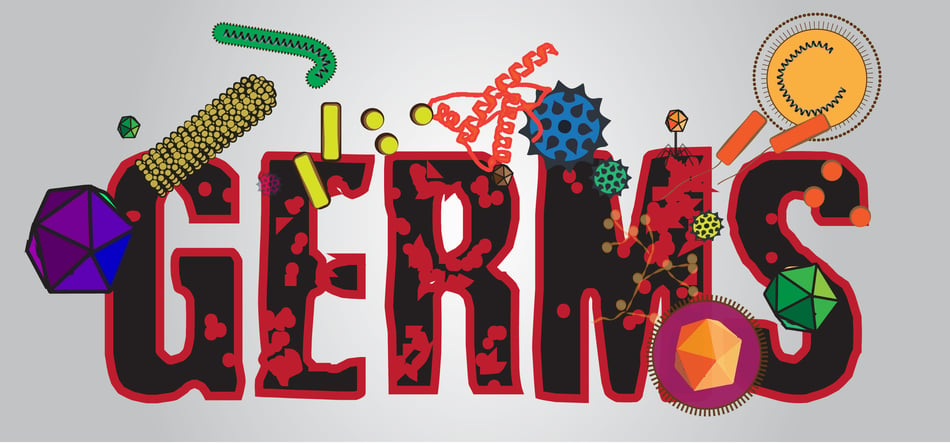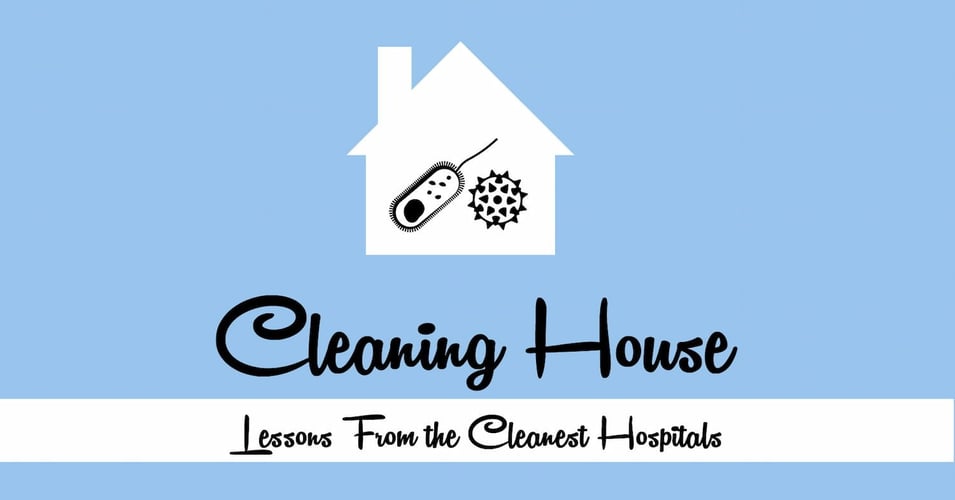Editor's Note: This post was originally published in March 2015 and has been updated for freshness, accuracy and comprehensiveness.
Germs on Surfaces: From Wimps to Bullies, Part 1

Germs, by definition, are viruses, bacteria, spores, fungi, and prions that can make you sick. And all germs are not created alike. Not only does the category of "germs" contain any pathogenic organisms, these organisms also vary tremendously in size and susceptibility to drugs and cleansers. This next series of posts provides an overview of these different germ types and explains just how hardy they are under fire from disinfectants to sterilants. Here's the rundown in order, from the strongest to the weakest, against our arsenal of cleaners. We'll start with the biggest, baddest bully first.
![]()
Prions | Most Resistant to Disinfectants/Sterilants
The word prion comes from the combination of the words "protein" and "infection." They are particles of proteins (not living organisms) that are "misfolded". Let's consider what proteins are to help understand prions. Proteins are what living things are made of, from our bodies to the cells of bacteria and even the structures of viruses. Proteins are what are created by the machinery in our cells. Think of it as a 3D printer: The computer sends the printer what shape to create (DNA contains the code of instructions in its genes), and the printer uses the polymer material to create the 3D object (the cell creates proteins that fold into the correct configuration). Correctly folded proteins make skin, organs, veins, eyes, and toes. If that protein is misfolded, it turns into something called an amyloid, a useless but extremely stable structure of protein clumps. These misfolded proteins make surrounding proteins misfold and connect to their clump. This means that they serve as a template for other proteins, making them misfold and clump into damaging and growing obstructions (called a proteinaceous fiber) which ultimately disrupt body functions (particularly in the brain).While they do not infect by multiplying, prions do affect the way new proteins are shaped, thus replicating their damaging characteristics.
Prions are extremely difficult to destroy because protein molecules have very strong bonds which are impossible to break using traditional cleaners. (Protein bonds have to be strong to make our bodies hold together, after all.) Even breaking prions apart is not sufficient, as they can continue to work as a template even in smaller sections. Drying them out or exposing them to toxic chemicals only temporarily deactivates them - they have been shown to re-form after these attempts and "refold" into the damaging protein, ready to being working as a template again. The only sure way of destroying prions is through incineration - burning them. This is possible when considering devices that can withstand fire, but not with all instruments. And prions already present in the body are extremely difficult to eradicate without causing collateral damage to healthy surrounding proteins. They are, without a doubt, the scariest bully on the playground.
Prions are a relatively new area of research, with recent discoveries being made connecting prions to many major neurodegenerative diseases such as Alzeimer's. Examples of known prion-caused diseases are Bovine Spongiform Encephalopathy and Creutzfeldt-Jakob disease.
Next weeks post will deal with more bullies. These we have known about far longer and have proven strategies for destroying, but they still pose a challenge in healthcare settings.
![EOScu Logo - Dark - Outlined [07182023]-01](https://blog.eoscu.com/hubfs/Eoscu_June2024/Images/EOScu%20Logo%20-%20Dark%20-%20Outlined%20%5B07182023%5D-01.svg)

![[infographic] Germs on Surfaces: Ranked Download and share!](https://no-cache.hubspot.com/cta/default/216314/interactive-178559227445.png)



